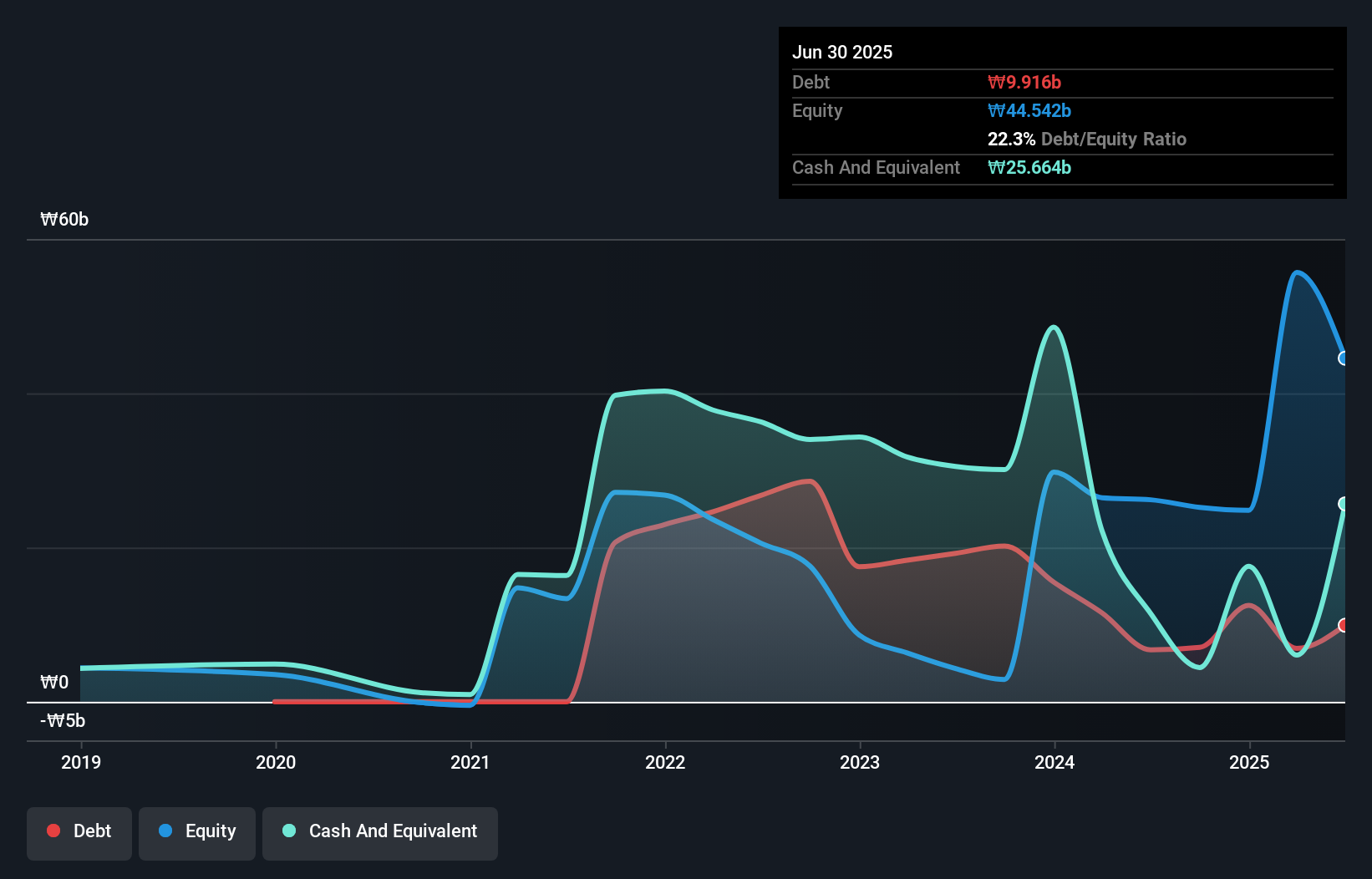Some say volatility, rather than debt, is the best way to think about risk as an investor, but Warren Buffett famously said that 'Volatility is far from synonymous with risk.' So it seems the smart money knows that debt - which is usually involved in bankruptcies - is a very important factor, when you assess how risky a company is. We note that Artist Company Inc. (KOSDAQ:321820) does have debt on its balance sheet. But the more important question is: how much risk is that debt creating?
Why Does Debt Bring Risk?
Debt is a tool to help businesses grow, but if a business is incapable of paying off its lenders, then it exists at their mercy. Ultimately, if the company can't fulfill its legal obligations to repay debt, shareholders could walk away with nothing. However, a more usual (but still expensive) situation is where a company must dilute shareholders at a cheap share price simply to get debt under control. Of course, debt can be an important tool in businesses, particularly capital heavy businesses. The first step when considering a company's debt levels is to consider its cash and debt together.
What Is Artist's Net Debt?
You can click the graphic below for the historical numbers, but it shows that as of June 2025 Artist had ₩9.92b of debt, an increase on ₩6.72b, over one year. However, its balance sheet shows it holds ₩25.7b in cash, so it actually has ₩15.7b net cash.

How Healthy Is Artist's Balance Sheet?
We can see from the most recent balance sheet that Artist had liabilities of ₩23.5b falling due within a year, and liabilities of ₩12.6b due beyond that. Offsetting these obligations, it had cash of ₩25.7b as well as receivables valued at ₩2.21b due within 12 months. So it has liabilities totalling ₩8.26b more than its cash and near-term receivables, combined.
Of course, Artist has a market capitalization of ₩90.9b, so these liabilities are probably manageable. However, we do think it is worth keeping an eye on its balance sheet strength, as it may change over time. Despite its noteworthy liabilities, Artist boasts net cash, so it's fair to say it does not have a heavy debt load! When analysing debt levels, the balance sheet is the obvious place to start. But you can't view debt in total isolation; since Artist will need earnings to service that debt. So if you're keen to discover more about its earnings, it might be worth checking out this graph of its long term earnings trend.
Check out our latest analysis for Artist
In the last year Artist wasn't profitable at an EBIT level, but managed to grow its revenue by 45%, to ₩34b. Shareholders probably have their fingers crossed that it can grow its way to profits.
So How Risky Is Artist?
We have no doubt that loss making companies are, in general, riskier than profitable ones. And we do note that Artist had an earnings before interest and tax (EBIT) loss, over the last year. Indeed, in that time it burnt through ₩7.3b of cash and made a loss of ₩4.3b. While this does make the company a bit risky, it's important to remember it has net cash of ₩15.7b. That kitty means the company can keep spending for growth for at least two years, at current rates. With very solid revenue growth in the last year, Artist may be on a path to profitability. Pre-profit companies are often risky, but they can also offer great rewards. When analysing debt levels, the balance sheet is the obvious place to start. However, not all investment risk resides within the balance sheet - far from it. Be aware that Artist is showing 3 warning signs in our investment analysis , and 1 of those is a bit concerning...
When all is said and done, sometimes its easier to focus on companies that don't even need debt. Readers can access a list of growth stocks with zero net debt 100% free, right now.
New: Manage All Your Stock Portfolios in One Place
We've created the ultimate portfolio companion for stock investors, and it's free.
• Connect an unlimited number of Portfolios and see your total in one currency
• Be alerted to new Warning Signs or Risks via email or mobile
• Track the Fair Value of your stocks
Have feedback on this article? Concerned about the content? Get in touch with us directly. Alternatively, email editorial-team (at) simplywallst.com.
This article by Simply Wall St is general in nature. We provide commentary based on historical data and analyst forecasts only using an unbiased methodology and our articles are not intended to be financial advice. It does not constitute a recommendation to buy or sell any stock, and does not take account of your objectives, or your financial situation. We aim to bring you long-term focused analysis driven by fundamental data. Note that our analysis may not factor in the latest price-sensitive company announcements or qualitative material. Simply Wall St has no position in any stocks mentioned.
About KOSDAQ:A321820
Artist
Engages in developing mobile and web-based advertising service systems and conducting advertising agency business in South Korea and internationally.
Excellent balance sheet with low risk.
Market Insights
Community Narratives



